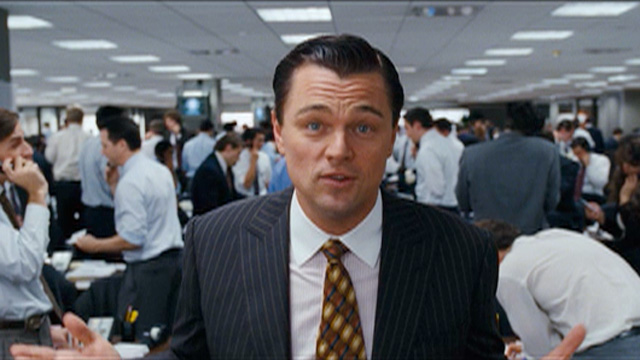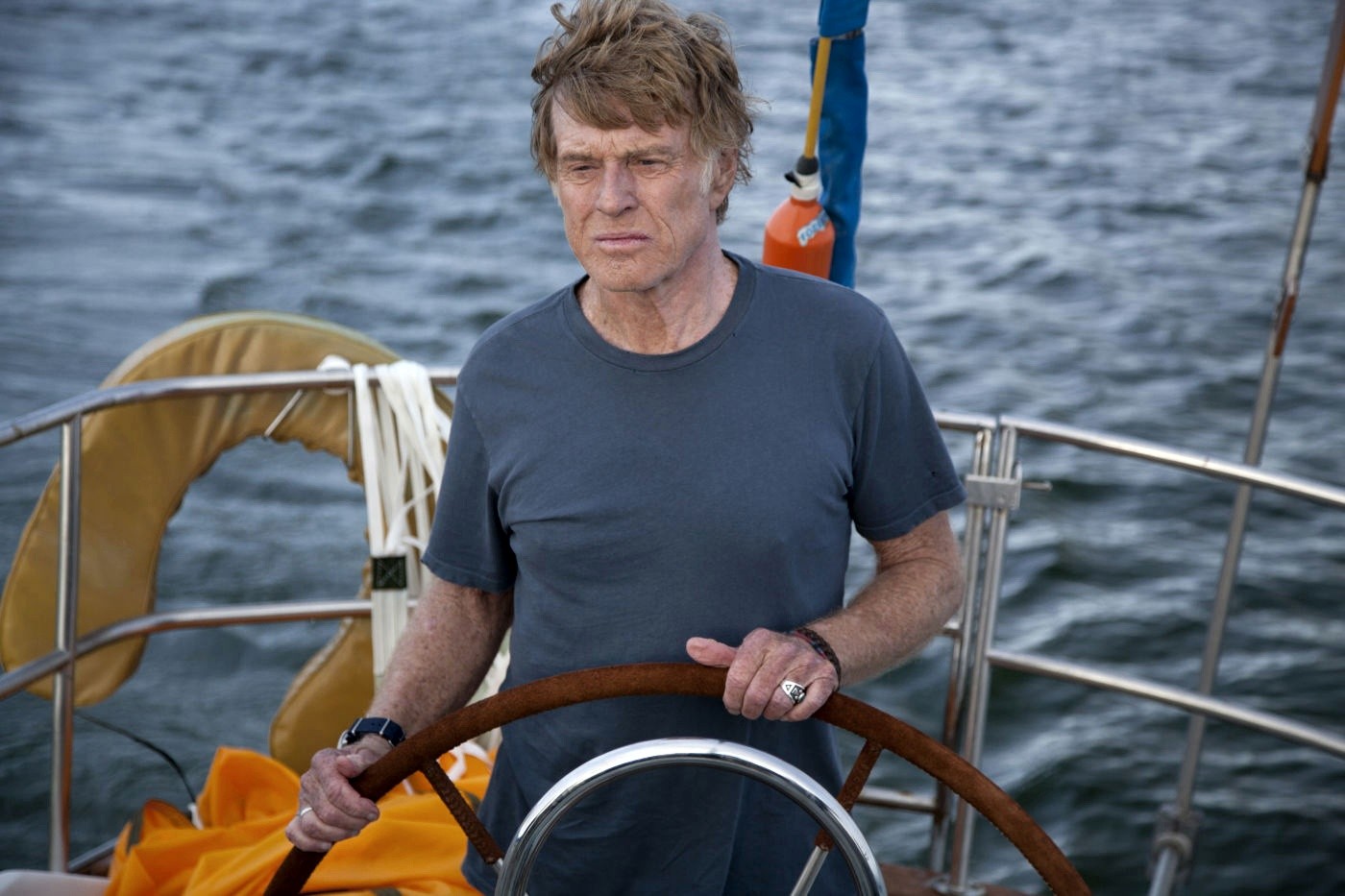In
the opening scene of Martin Scorsese’s “The Wolf of Wall Street,” around three
hundred or so drunken, crazed stockbrokers chant and cheer as Jordan Belfort,
the protagonist of the movie, proceeds to toss a dwarf dressed in tights and a
helmet at a target with a dollar sign as the bulls eye. The place goes wild,
like the crowd at a cockfight.
Wait,
wait, did I really just write all that… stockbrokers throwing dwarfs at a bulls
eye, in the middle of their office? You bet I did. Within the first ten seconds,
Scorsese establishes the ruckus and insanity of “ The Wolf of Wall Street,” and
he’s only getting started. It only gets crazier from there.
At
two hours and fifty-nine minutes (Scorsese’s longest movie), “The Wolf of Wall
Street” is a massive, bold, wildly entertaining crime epic that only Scorsese
could have directed. It shares DNA with “Goodfellas” and “Casino,” Scorsese’s
own gangster epics, as well as Brian De Palma’s “Scarface,” and a touch of
Oliver Stone’s “Wall Street.” Like those movies, “Wolf” is about people who
achieve a twisted version of the American Dream and how they eventually lose it
all, in the pursuit of wanting even more wealth and success. To quote Nicky
Santoro from “Casino”: “In the end, we fucked it all up.” Now in his seventies,
Scorsese directs the film as if he was in his thirties. He knows this kind of
material backwards and forwards, his heart’s in it one hundred percent.
After
the opening scene, Scorsese and screenwriter Terrence Winter (based on a memoir
by the real Jordan Belfort, about his time on Wall Street in the eighties)
continue to shock us. In a brief montage we’re introduced to Jordan’s (Leonardo
Dicaprio) overwhelming wealth. “Look at all the money I have and look how many
drugs I take!” he’s essentially saying, and continues to say throughout most of
the movie. In great Scorsese fashion the story then goes back in time, to a
young Jordan Belfort arriving in Manhattan for the first time, eager, fresh
faced and innocent. Like any criminal kingpin Jordan starts at the bottom, when
he gets his first stockbroker job he’s told he’s lower than dirt.
Though
he manages to attract the attention of a veteran broker Mark Hanna (Matthew
McConaughy) who takes Jordan under his wing. In this brief but crucial section,
Hanna takes Jordan’s innocence and molds him into the cocky slimeball he
eventually becomes. The scene where Hanna teaches Jordan how to be a big time
Wall Street man, beating his chest and chanting like a Native American doing a
war dance, is among the best scenes in the entire movie. Put simply McConaughy
owns the role (continuing his cinematic hot streak this year) and his presence
is felt during the rest of the movie. Jordan becomes a new man.
After
running into some trouble Jordan finds himself out of a job but--since he’s
become a new man, or rather, a wolf hungry for Wall Street dominance—not for
long. Along with his new friend and partner Donnie Azoff (Jonah Hill) they
become entrepreneurs. What starts as a small operation run out of an old auto
mechanic garage with a bunch of yahoos who’ve never sold a stock in their life
as the employees, turns into a full blown stockbroking firm (called Stratton
Oakmont) situated in the heart of Wall Street. From there Jordan, Donnie and
the rest begin rolling in vast amounts of wealth and excess. Drugs, alcohol,
prostitutes, yachts, rooms full of drugs, rooms full of prostitutes, rooms full
of prostitues and drugs. They make so much money so fast that they practically
use hundred dollar bills as tissue paper. During a regular workday, Jordan and
the rest of the high ups sit in their conference room and brainstorm ways to
spend their money. At one point they have a serious conversation about the
logistics of hiring those dwarfs from the opening scene.
Nothing
they do is subtle, but they’re arrogant Wall Street guys; this is how they show
their dominance. And I suppose I don’t need to tell you that the way in which
they acquire most of their money is illegal. So naturally it attracts the
attention of an FBI agent Patrick Denham (Kyle Chandler) who, when it comes to
FBI work, is as confident and determined as Jordan is. A meeting between the
two on Jordan’s yacht turns into an amusing and tense showdown of cockiness.
I
also don’t have to tell you that Jordan is a bad man, but so is Henry Hill,
Tony Montana, and Gordon Gekko. Their climb to the top is fascinating to watch
and their entrepreneurial spirit is admirable. Despite all of the bad and
utterly tasteless things Jordan does in “Wolf,” he is at heart a damn good
salesman, and a great motivator. And as bad as he is, you still have to respect
his ambition and intelligence; not just anyone can start a successful
stockbroking firm and sustain that success for years.
Also,
as with any antihero, the good times eventually start to run out and he must be
punished for all his rotten deeds. Dicaprio’s performance is phenomenal, one of
tremendous highs and tremendous lows. Audacious and wonderfully over-the-top,
at times I was even reminded of Al Pacino’s performance as Tony Montana. And
his chemistry with right hand man Hill is infectious. The thirty-year-old
comedic actor, from movies like “Super bad” and “Knocked Up,” has sure come a
long way, and much like his Oscar nominated performance in “Moneyball” the
character of Donnie appeals to his sensibilities as a comedic actor but also
allows him to do something different.
Since
this is a Scorsese crime picture, he uses familiar techniques. Structurally the
movie resembles “Goodfellas,” combining montages containing dynamic and fluid
camera work by Rodrigo Prieto with lengthy dialogue-heavy exchanges. Voice over
narration (by Jordan) keeps the story moving at a breezy pace and just about
every scene has a pop or rock song to underline the action and emotions.
At
the same time however, Scorsese finds ways to juice up these techniques and
even manages to add in some innovations. For example, near the end of the
movie, after Jordan takes at least ten Quaaludes one night he trips so hard
that he practically becomes disabled. Without going into too many details, he miraculously
drives himself home from a nearby country club, without damage to himself or
his car. However, a few minutes later we find out that he actually did cause a
lot of property damage and the previous sequence was only fantasy. Through this
ridiculous and amusing scene Scorsese subtly introduces the element of the
unreliable narrator and it makes you think back over the events in rest of the
movie. How much of the extravagant stuff actually happened, and how much of it
only took place in his mind? Did Jordan and his associates really hire the
dwarfs or did they only talk about it? Even though he’s dealing with familiar
material Scorsese still manages to surprise us.
“The
Wolf of Wall Street” does run into some editing problems, certain scenes could have
been trimmed down or even taken out all together. And since this is a male
dominated story the women, such as Jordan’s blonde bombshell wife played by
Madison McKinley, don’t have much of a place, and overall the movie doesn’t
have the same depth as “Good Fellas” or “Casino,” but that doesn’t make it bad.
Even though I generally knew what direction the story was going in, I was
continually surprised and entertained by what I saw. Scorsese keeps you on your
feet; you’re alive in the world the movie creates. There’s always something to
keep your attention. It’s easily his best movie since “The Departed.”







